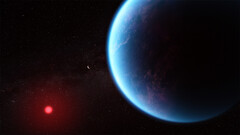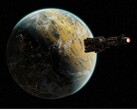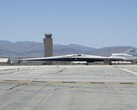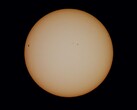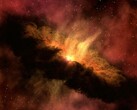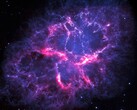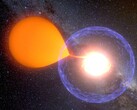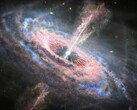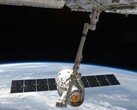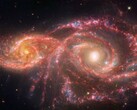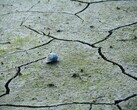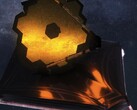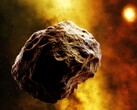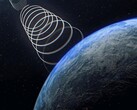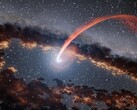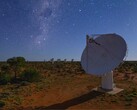First spotted in 2015 by NASA’s K2 mission, K2-18b orbits a cool dwarf star located 120 light-years away in the constellation Leo. This distant world, roughly 8.6 times the mass of Earth, exists within the habitable zone, or, "Goldilocks zone"—the region surrounding a star where conditions might allow liquid water to exist—much like Earth. While initial data from Hubble hinted at atmospheric water vapor, using Webb’s advanced sensors, a team of astronomers and researchers out of the University of Cambridge were able to find traces of methane (CH₄), carbon dioxide (CO₂), and possibly dimethyl sulfide (DMS), confirming more complex, carbon-bearing molecules, which are key building blocks of life.
These discoveries suggest K2-18b could be a Hycean planet, a class of exoplanets with hydrogen-rich atmospheres and possibly liquid water oceans beneath. That combo makes it a compelling candidate in the search for life beyond Earth. K2-18b is larger than Earth (about 2.6 times the radius), which means its surface could be covered by high-pressure ice or a thick ocean, possibly too hot to support known life. But the presence of life-friendly chemistry in its atmosphere is a major breakthrough.
Perhaps the most thrilling aspect is the possible detection of DMS. On Earth, this compound is largely produced by ocean-dwelling microorganisms, living organisms, like marine phytoplankton, making it a potential biosignature. However, scientists caution that the detection is still tentative and needs further confirmation with future Webb observations.
According to lead researcher Nikku Madhusudhan, this finding pushes scientists to consider more diverse types of planets—not just Earth-like rocky worlds—in the hunt for alien life, stating that "Traditionally, the search for life on exoplanets has focused primarily on smaller rocky planets, but the larger Hycean worlds are significantly more conducive to atmospheric observations." The research team is now preparing for additional observations using James Webb Space Telescope's Mid-Infrared Instrument (MIRI) to validate the DMS signal and better understand this mysterious exoplanet.




